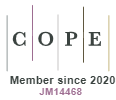Performance analysis of the samu of Ouro Preto and Mariana through simulation models
DOI:
https://doi.org/10.5585/rgss.v10i3.18710Keywords:
Emergency medical services, Ambulance, SAMU, Simulation, health planningAbstract
The Emergency Medical System of Ouro Preto and Mariana operates together, continuously, 24 hours a day, seven days a week, using four ambulances fixed located in three bases scattered throughout the region. Given the degree of uncertainty of the system coupled to the number of parameters capable of interfering in its efficiency, it is interesting to determine and evaluate indicators to make a diagnosis of the complete situation of the emergency system in the region in line with the service quality analysis. In this sense, this work proposes discrete event simulation models that, after validation, were able to analyze (1) the location of ambulance bases in centralized and decentralized configurations, (2) the behavior of the system in meeting the estimated real demand, (3) the performance of the system after the removal of an ambulance using two ambulance dispatch policies, and (4) the changes in system demand throughout the day. The results were able to point out the positive and negative technical features of each scenario, as well as any possible bottlenecks in the system.
Downloads
References
Aboueljinane, L., Sahin, E., & Jemai, Z. (2013). A review on simulation models applied to emergency medical service operations. Computers & Industrial Engineering, 66(4), 734-750.
Aboueljinane L., Sahin E., Jemai Z., & Marty, J. (2014). A simulation study to improve the performance of an emergency medical service: Application to the French Val-de-Marne department. Simulation Modelling Practice and Theory, 47, 46-59.
Bélanger, V., Lanzarone, E., Nicoletta, V., Ruiz, A., & Soriano, P. (2020). A recursive simulation-optimization framework for the ambulance location and dispatching problem. European Journal of Operational Research, 286, 713-725.
Brasil. Portaria Nº 1.863/GM de 29 de setembro de 2003. (2003a). Diário Oficial da República Federativa do Brasil, Brasília, DF.
Brasil. Portaria Nº 1.864/GM de 29 de setembro de 2003. (2003b). Diário Oficial da República Federativa do Brasil, Brasília, DF.
Brasil. Portaria Nº 1.600/GM de 07 de julho de 2011. (2011). Diário Oficial da República Federativa do Brasil, Brasília, DF.
Brasil. Portaria Nº 1.010/GM de 21 de maio de 2012. Diário Oficial da República Federativa do Brasil, Brasília, DF.
Instituto Brasileiro de Geografia e Estatística. (2010). Censo 2010 - Sinopse por setores. Recuperada em 30 de janeiro de 2019, de https://censo2010.ibge.gov.br/sinopseporsetores/?nivel=st.
Lopes, R.S.M., Morais, T.R.M, Castro, A.P.D., Motta, D.P.S., Pinheiro, R. C. S. M., Gualberto, C.R., Gomes, H.C., Gomes Júnior, A.C., & Rodrigues, L.F. (2021). Análise do Serviço de Atendimento Médico de Urgência nos municípios de Ouro Preto e Mariana, Minas Gerais, Brasil. Submetida a Revista Mundi Saúde e Biológicas.
McCormack, R., & Coates, G. (2015). A simulation model to enable the optimization of ambulance fleet allocation and base station location for increased patient survival. European Journal of Operational Research, 247(1), 294-309.
Ministério da Saúde. Serviços de Atendimento Móvel de Urgência - SAMU 192. Recuperada em 11 de maio de 2020, de https://www.gov.br/saude/pt-br/acesso-a-informacao/acoes-e-programas/samu.
Nogueira Junior, L. C., Pinto, L. R., & Silva, P. M. S. (2014). Reducing Emergency Medical Service response time via the reallocation of ambulance bases. Health Care Management Science, 19(1), 31-42.
Pinto, L. R., Silva, P. M. S., & Young, T. P. (2015). A generic method to develop simulation models for ambulance systems. Simulation Modelling Practice and Theory, 51, 170-183.
Silva, P. M. S. (2010). Análise do serviço de atendimento Móvel de urgência (SAMU) de Belo Horizonte via Simulação e Otimização. Dissertação de mestrado, Universidade Federal de Minas Gerais, Belo Horizonte, MG, Brasil.
Takeda, R. A., Widmer, J. A., & Morabito, R. (2001). Uma proposta alternativa para avaliação do desempenho de sistemas de transporte emergencial de saúde brasileiros. Transportes, 9(2), 9-27.
Ünlüyurt, T., & Tunçer, Y. (2016). Estimating the performance of emergency medical service location models via discrete event simulation. Computers & Industrial Engineering, 102, 467-475.
Yang, W., Su, Q., Huang, S. H., Wang, Q., Zhu, Y., & Zhou, M. (2019). Simulation modeling and optimization for ambulance allocation considering spatiotemporal stochastic demand. Journal of Management Science and Engineering, 4, 252-265.
Zaffar, M. A., Rajagopalan, H. K., Saydam, C., Mayorga, M., & Sharer, E. (2016). Coverage, survivability or response time: A comparative study of performance statistics used in ambulance location models via simulation–optimization. Operations Research for Health Care, 11, 1-12.
Zhen, L., Wang, K., Hu, H., & Chang, D. (2014). A simulation optimization framework for ambulance deployment and relocation problems. Computers & Industrial Engineering, 72, 12-23.
Downloads
Published
How to Cite
Issue
Section
License
Copyright (c) 2021 Revista de Gestão em Sistemas de Saúde

This work is licensed under a Creative Commons Attribution-NonCommercial-NoDerivatives 4.0 International License.
Autores mantém os direitos autorais e concedem à revista o direito de primeira publicação, com o trabalho simultaneamente licenciado sob a Creative Commons Atribuição - Não comercial - Compartilhar igual 4.0 Internacional que permite o compartilhamento do trabalho com reconhecimento da autoria e publicação inicial nesta revista.
Autores têm autorização para assumir contratos adicionais separadamente, para distribuição não-exclusiva da versão do trabalho publicada nesta revista (ex.: publicar em repositório institucional ou como capítulo de livro), com reconhecimento de autoria e publicação inicial nesta revista.
Autores têm permissão e são estimulados a publicar e distribuir seu trabalho online (ex.: em repositórios institucionais ou na sua página pessoal) a qualquer ponto antes ou durante o processo editorial, já que isso pode gerar alterações produtivas, bem como aumentar o impacto e a citação do trabalho publicado (Veja O Efeito do Acesso Livre) em http://opcit.eprints.org/oacitation-biblio.html
- Abstract 3680
- PDF (Português (Brasil)) 1371


